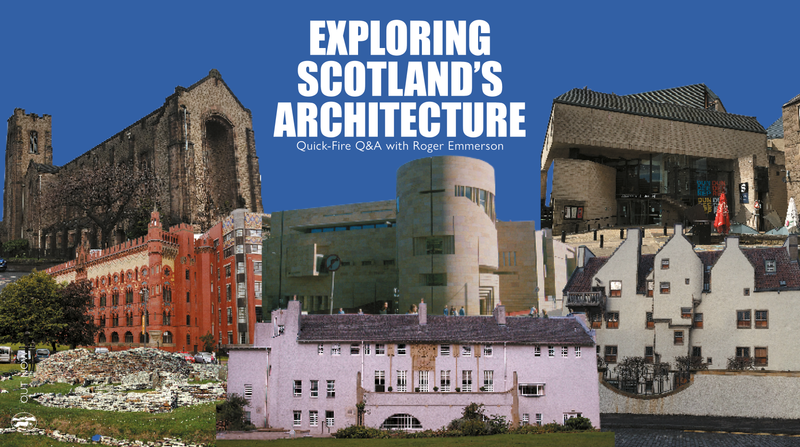Exploring Scotland's Architecture
Quick-Fire Q&A with Roger Emmerson

Quick-Fire Q&A with Roger Emmerson
Join us as Roger Emmerson, author of Scotland in 100 Buildings, takes part in our series of quick-fire Q&As!
What is a quick-fire Q&A?
We have our interviewee pick a number at random and we ask them the general question listed next to it.
Shortly after we switch to asking book-specific questions, to give you a brief insight into our wonderful writers and their books.
Well, it's an opportunity that was never available to me before. I had always written for conferences, occasional articles or magazines, but nothing consistent.
I've had a greater opportunity to follow ideas, which have given me a great deal more confidence in my writing talent.
Self-editing.
I tend to put in words that you don't really need.
Currently, Patricia Highsmith.
I had a late interest in her work, principally through the television series, which was very close to the book. At Christmas, I was given a compilation of her diaries when she was very young, trying to get started as a writer and was working for American comics, writing the scripts for comics, which she did for about seven years. It's just a story of her incredible life.
Where I'm sitting now, which is on the couch in my living room in my house, with a computer on my knee. I know it's bad for my neck and shoulders to do this, but I feel comfortable.
I have a desk, which I'm looking at now, and it's got a drawing board on it, but I have written there,
Arnie Palmer from Len Dayton's novels.
He's a kind of throwaway, slightly cynical character, which I kind of love.
My keyring which has a bottle opener on it.
It was an opportunity to take what I'd written in the first book, The Land of Stone, and simplify it. Make it more palatable, easier to read.
I know people have struggled through parts of the first book. So, writing the second book allowed me to make it clearer and touch on other aspects which were not so heavily, architectural theoretical and much more to do with how people live, how people perceive things, what might be of interest generally.
Scotland in 100 buildings.
I want to go there.
I want to go and look at this.
I want to see this.
That's an interesting building.
I didn't know that was two streets down from where I live.
I've walked past it every day for ten years, and I've never noticed it.
Debut de siècle, which covers about 1880 to 1920. It's always been my favourite period in architecture, European architecture, not just Scottish architecture. I was looking at it the other day and I was staggered at the number of books about the period I have. I bought another one just the other day. There must be something like 30 or 40 books of the period.
If I were ever to write another book about Scottish architecture, I would focus on that. Just to expand on that a wee bit. The problem to me is that Charles Rennie Mackintosh has swamped the period, and that a whole host of other people who are not mentioned are not given any credit. So, one of the things I did in this book was to bring some unknown names to the front, because I thought there's a bigger story there.
Well, the cover was done for me, so I didn't have much choice in that at all.
But it's good. It turned out well. It was a nice mix of things and it spread over the whole period.
Well, the pub would probably feature fairly highly in it.
We'll have a book launch at the RIAS and I'm looking forward to that because I'll have a conversation with Stuart McHardy, who's also a Luath author, a noted historian and an expert in Scottish culture. So, I'm likely to get non-architectural questions from him, which I think will be useful.
I've got the opportunity to expand on what's in the book and maybe drive it in a rather odd direction, just for a bit of humour.
Well, I wish I'd known that I would be asked for a timeline, a glossary and an index. Those were kind of late arrivals on the scene. I suppose I should have expected it.
As far as what's in the book, in terms of the kind of information and knowledge that is in it, I think I was pretty clued up.